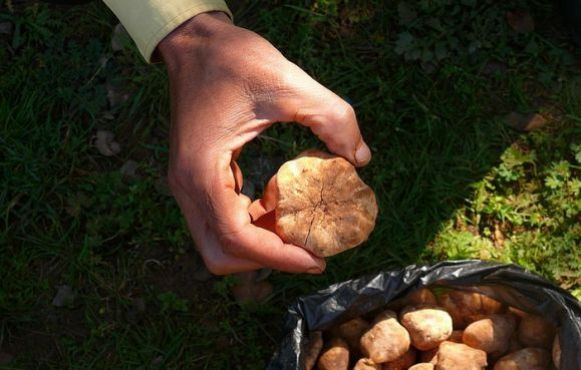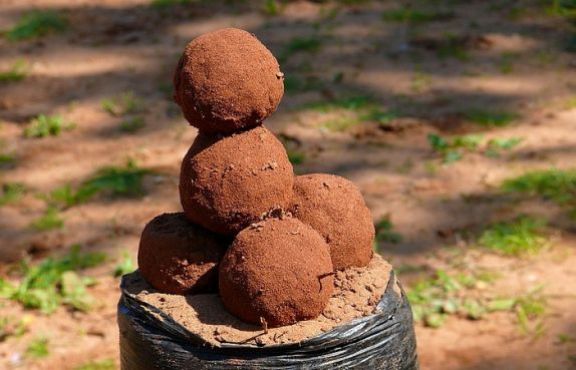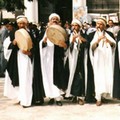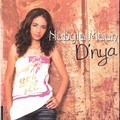What if Morocco dug into truffles ? The Kingdom is home to several species of this mushroom, very popular in Europe but barely consumed by Moroccans. The country could make this agricultural product's sector grow by exporting said truffles. It is noteworthy, for instance, to see that Spain exports more than 95% of the 45 tons of its truffle harvests to its French neighbor.
But due to the summer drought and the winter delays, the truffle harvest was suboptimal at the beginning of the year in France and the prices on the French market are expected to increase dramatically as a result. Therefore, the country will have to turn to importing truffles from neighboring countries around the Mediterranean, where these mushrooms are also cultivated. In the beginnings of this thriving truffle market, would the Kingdom be able to become one of the key players ? In any case, a dozen varieties of truffles are currently harvested in Morocco.
Terfass, a Moroccan terroir truffle
Known as «Terfass» for Moroccan truffle producers, the mushroom is also called «truffle of the desert» or «sand truffle». Depending on the specificities of the region of production or the color, we can find local names that are associated with the truffle. Thus, the most famous varieties are called the «Tafilalet's Red Terfass», «Tafilalet's White Terfass», «Maamora's Pink Terfass», «Zair's Black Terfass» and «Terfass of Taida».
Three regions concentrate the most truffle supplies. In the north-west, the Maâmora forest east of Rabat is an area populated by cork oaks where truffles can benefit from the semi-arid climate and acidic soil. One can also find truffles in the Oriental region, and finally in the area of holm oak forests, in the former region of Doukkala-Abda. Many truffle farmers are engaged in this seasonal trade along Moroccan roads between March and May, depending on the region.
Towards a label?
Yet despite their active harvest, sand truffles are seldom consumed in Morocco. They are most often used as a side vegetable accompagnying the tagine; the populations of the producing regions claim it has very nutritious virtues. A team from the Mohammed V University of Rabat has been working since April 2015 on the development of Moroccan truffle species culture, a large part of it is intended for export.
But that's exactly where the problem lies. Moroccan truffles suffer from a lack of popularity. They are not as popular as the «truffle of Perigord» in France or «the truffle of Alba» in Italy. Some of them even refuse the truffle appelation, claiming that the Moroccan «terfass» and truffles do not have the same scent nor flavor therefore should not bear the same price. If the «Terfass» is traded at 200 up to 1,000 dirhams per kilo (18 to 90 €), the prices of some truffles vary between 6,600 and 109,200 dirhams (594 to 9,828 €) depending on the quality and the quantity of the harvest.
The exotic origin of the sand truffle could be used as a marketing argument for Moroccan markets to find it a premium place on the stalls of European markets. This might be why Moroccans have engaged in a major lobbying campaign to label Terfass as a «geographical denomination of origin» which would give the product a guarantee of quality and would revive the interest of the production of this mushroom.
The black truffle of Périgord in Morocco
A second path seems to have been drawn by Dr Abdelaziz Laqbaqbi. The name of this former orthopedist came to prominence in the early 2000's when he reconverted into a pioneer of the introduction of the black truffle culture of Périgord in Morocco in a plantation in the heart of the Middle Atlas. Awarded by the SIAM prize for innovation in 2006, he know projects to launch other black truffle farms and aims to launch a truffle museum in Morocco.
This time it is true truffles that have benefited from the alternating rainfalls and droughts in Morocco. Indeed, these conditions led to the cultivation and maturation of truffles. The truffles issued by the Laqbaqbi farms are now easily exported and can even compete with truffles produced in France or Italy. But more than anything, Dr Abdelaziz Laqbaqbi urges the Moroccan state to show interest in the cultivation of this mushroom, very popular in the French gastronomy, as the truffle culture could indeed benefit from the Green Morocco Plan framework.





 chargement...
chargement...
















